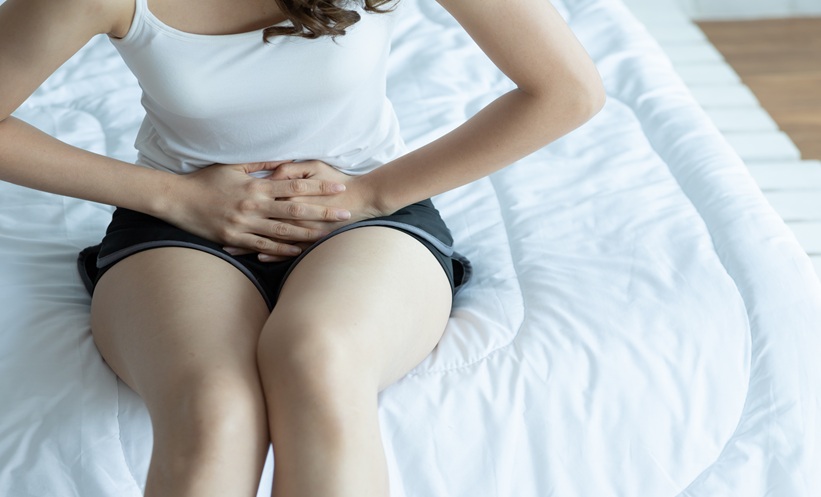Author: Aleksandra Zurowska, EMJ, London, UK
Citation: EMJ Urol. 2025;13[1]:28-32. https://doi.org/10.33590/emjurol/DESX4039
![]()
An expert-led session at the European Association of Urology (EAU) Congress 2025 examined how non-invasive assessment, evidence-based surgical approaches, and predictive strategies can support personalised care and improve outcomes for men with lower urinary tract symptoms (LUTS), benign prostatic obstruction (BPO), and overactive bladder (OAB).
NON-INVASIVE WORKUP OF MALE OVERACTIVE BLADDER
Marcio Augusto Averbeck, Moinhos de Vento Hospital, Porto Alegre, Brazil, began his session by providing a brief background on LUTS, a common complaint in an increasingly ageing male population. The objectives in assessing men with LUTS are to establish a differential diagnosis and define their clinical profile in order to assess patients’ values and preferences, set their expectations, identify those at risk of progression, and provide the best evidence-based care.
To provide a real-life example, Averbeck described a clinical case of a 64-year-old man with a history of benign prostatic enlargement diagnosed 10 years earlier, whose main complaint was mixed LUTS. The patient presented with bothersome urinary urgency, with a urinary frequency of 15 times a day and 2–3 times a night. The patient also had co-morbid systemic arterial hypertension, managed with losartan 50 mg/day.
What Should the Diagnostic Workup for This Patient Be?
Averbeck detailed the EAU guidelines on non-neurogenic LUTS, according to which non-invasive assessments are recommended first. These initial non-invasive assessments include a medical history, symptom score questionnaire, urinalysis, physical examination, prostate-specific antigen, if the diagnosis of prostate cancer would impact management, and post-void residual (PVR) measurement.
Averbeck recommended using the symptom score questionnaire to assess quality of life, in line with EAU guidelines. He also noted that the bladder diary is strongly recommended, particularly for patients presenting with nocturnal symptoms, and that physical examination and urinalysis are key in the assessment of male LUTS.
Prostate-specific antigen should always be considered in two circumstances: 1) if the diagnosis of prostate cancer will change management, and 2) when it would assist in the treatment and/or decision-making process. Measurement of PVR urine is strongly recommended in the guidelines and should be performed using a non-invasive method. While the EAU guidelines indicate that uroflowmetry has a weak strength rating at initial assessment, it has a high strength rating for patients prior to medical or invasive treatment. Averbeck believes uroflowmetry is key and uses it in his clinical practice routinely. Urethrocystoscopy has a weak strength rating for patients with LUTS; however, should always be considered when a minimally invasive surgical procedure is a treatment option.
Urodynamics
Moving on to urodynamics (UDS) and the publication of the UPSTREAM trial,1 in which the UDS randomised group was noninferior to routine care for the International Prostate Symptom Score (IPSS), but did not reduce the surgical rates. The study showed that the routine use of UDS in the evaluation of uncomplicated LUTS has a limited role and should be used selectively. However, the EAU guidelines highlight factors that should be taken into account when considering urodynamics, which could be useful for patients under 50 and over 80 years old, such as performing UDS when considering invasive treatment in men with bothersome, predominantly voiding LUTS. UDS is also recommended if the voided volume is <150 mL or Qmax<10 mL/s before surgery. Averbeck believes that these are reasonable options and that it is important to map the need for UDS in these situations.
Other non-invasive assessments include ‘surrogates’, where clinicians sometimes use ultrasound or biomarkers to assess the risk of progression and their correlation with the Bladder Outlet Obstruction Index (BOOI). However, the heterogeneity is often what limits the use of these assessments as routine in clinical practice. Additionally, Averbeck expressed that use of the novel Visual Prostate Symptom Score (VPSS) could be beneficial when uroflowmetry is unavailable, and when the patient has limited literacy.
To conclude, Averbeck circled back to the clinical case, where the patient had an IPSS of 22 points, a digital rectal examination of 35 g with normal consistency and no palpable nodules, Qmax at 11 ml/seg, PVR of 40 ml, and a bladder diary that excluded nocturnal polyuria. According to the EAU guidelines, this patient would fit into medical treatment initially with alpha blocker or PDE5 inhibitor monotherapy, and if after 4–6 weeks, the patient still experienced residual storage symptoms, treatment could involve the addition of anti-muscarinic receptor antagonist/beta-3 agonist. In this case, the absence of elevated post-void residual volume and the presence of an adequate Qmax suggest that the patient may be appropriately managed with an anti-muscarinic agent, in line with guideline recommendations for persistent storage symptoms.
WHICH SURGERY IS BEST FOR PATIENTS WITH BENIGN PROSTATIC OBSTRUCTION/ OVERACTIVE BLADDER?
Malet Rieken, University of Basel, Switzerland, began his talk by introducing the current surgical options available for BPO based on the current EAU guidelines, which include resection, vaporisation, enucleation, and various types of alternative ablative techniques, as well as non-ablative techniques. The aim of Rieken’s talk was to determine which surgical option is the best for patients with BPO/OAB.
Surgical techniques vary in how effectively they relieve obstruction, meaning that not all procedures achieve the same degree of de-obstruction in every patient. Rieken then described a systematic review by Creta et al.,2 which grouped patients based on improvements in outlet obstruction and the IPSS, which revealed that the holmium laser enucleation of the prostate (HoLEP) performs very well for both obstruction relief and IPSS improvement. In contrast, transurethral resection of the prostate (TURP) showed solid improvement in IPSS but less impact on obstruction. Laser vapourisation ranked even lower on both metrics, and techniques such as aquablation and UroLift were even further behind.
Therefore, the greater the obstruction relief, the higher the expected IPSS improvement. However, it is important to remember that IPSS doesn’t always equal obstruction, so a closer look at how different techniques affect both symptom relief and obstruction is needed.
Specific Technologies
Considering some specific technologies, Rieken described HoLEP as a therapy that has been associated with a significant reduction in OAB symptoms at 12-month follow-up, with improvements observed across all age groups. Similar improvements in OAB-related symptoms such as urgency, frequency, nocturia, and IPSS have also been observed in patients undergoing other surgical procedures like TURP, GreenLight laser, or diode laser vaporisation.
Novel Techniques
Rieken continued by describing novel techniques, including aquablation. While there is a lack of specific data on its effect in OAB-dominant patients, IPSS analyses for frequency, urgency, and nocturia show a clear decline over 12 months.
Another notable technique was Rezum, which was featured in an interesting analysis by Wolters et al.3 According to Rieken, the analysis looked at a subgroup of 250 patients, including 19 with urodynamic assessments pre- and post-Rezum due to persistent OAB symptoms. Before surgery, most were clearly obstructed. Post-surgery, 26% still had obstruction, 31% were equivocal, and 42% were unobstructed. Rieken stated that this might explain why there was no significant change in the prevalence of detrusor overactivity in this selected group.
Combined Treatments
Moving onto combined treatments like TURP with botulinum toxin injection, Rieken described an RCT by Huang et al.,4 that compared TURP with an addition of 300 units of Dysport to TURP plus saline in patients with detrusor overactivity, but without urgent urinary incontinence. All patients had a BOOI of over 40. Results showed that the IPSS didn’t significantly differ between groups at 6 months; however urgency incontinence was significantly lower in the TURP + Botox group.
In conclusion, Rieken stressed that while many surgical options improve OAB symptoms, factors like anaesthesia risk, anticoagulation, prostate size, and patient preferences must guide treatment. HoLEP remains the only size-independent technique offering consistent relief, but no single approach suits all, and high-level evidence for OAB- or detrusor overactivity-dominant cases remains limited.
HOW TO PREDICT PERSISTENT OVERACTIVE BLADDER AFTER BENIGN PROSTATIC OBSTRUCTION SURGERY
Sanjay Sinha, Apollo Hospital, Hyderabad, India, began by explaining that most patients undergoing surgery for BPO present with a combination of voiding and storage symptoms. Importantly, it is often the storage symptoms, such as urgency and frequency, that prompt patients to seek medical consultation, and many ultimately undergo surgery because these symptoms significantly affect their quality of life. Fortunately, most patients who undergo BPO surgery experience an improvement in storage symptoms, and this improvement contributes significantly to their postoperative quality of life. Therefore, predicting whether a patient will benefit in this way is important for preoperative counselling.
How Common is Persistent Overactive Bladder After Surgery?
Many patients undergoing surgery for BPO present with storage symptoms, and, while a significant proportion experience improvement postoperatively, a notable number may continue to have persistent or new symptoms over time. Long-term follow-up studies have also suggested that some patients may eventually require OAB medication after surgery.
What Are the Mechanisms Behind Persistent Symptoms?
Sinha emphasised that in order to better predict persistent OAB, it is important to understand why these symptoms might persist. Although the current evidence is not entirely robust, some conceptual mechanisms exist; for example, a common underlying factor, such as bladder ischaemia, could be driving both storage and voiding symptoms. Other potential mechanisms could include inadequate obstruction relief due to an incomplete procedure or a suboptimal surgical technique; postoperative underactive detrusor may also cause inefficient voiding that manifests as storage symptoms; and bladder wall changes due to longstanding obstruction may persist after surgery. Notably, patients with a known neurological condition are more likely to experience persistent symptoms.
Sinha highlighted that higher preoperative urgency scores and normal detrusor contractility are linked to better OAB symptom resolution after BPO surgery. In contrast, longer symptom duration, psychological comorbidities, and absence of obstruction may increase the risk of persistence. Although certain patterns of detrusor overactivity (DO) may play a role, evidence remains inconclusive, and the UPSTREAM trial1 showed that in men with DO, urodynamic indices like the BOOI and Detrusor Contractility Index (DCI) lose predictive value.
What Predicts the Resolution of Overactive Bladder?
Two strong predictors are unequivocal obstruction and normal detrusor contractility. Patients with both of these are more likely to see improvement in their OAB symptoms after surgery. However, the UPSTREAM study1 suggested that in the presence of DO, these predictors lose their value. Although, it is still unclear whether this applied to total IPSS or specifically to storage symptoms.
What Predicts Persistent Overactive Bladder?
Some predictors include: older age, possibly longer symptom duration, psychological comorbidities, severe preoperative storage symptoms, and early-onset DO, high-pressure DO, or terminal DO. However, Sinha stressed that the mere presence of DO may not be a predictor of poor outcomes in itself.
CONCLUSION
To close the session, Sinha reminded the audience that persistent OAB following BPO is relatively common, but predictive tools, especially invasive urodynamics, are not routinely used.
These insightful presentations highlighted the importance of tailoring treatment strategies for male OAB and BPO, emphasising the role of patient-specific assessment, guideline-driven decision-making, and the need for stronger predictive tools to guide long-term management.






